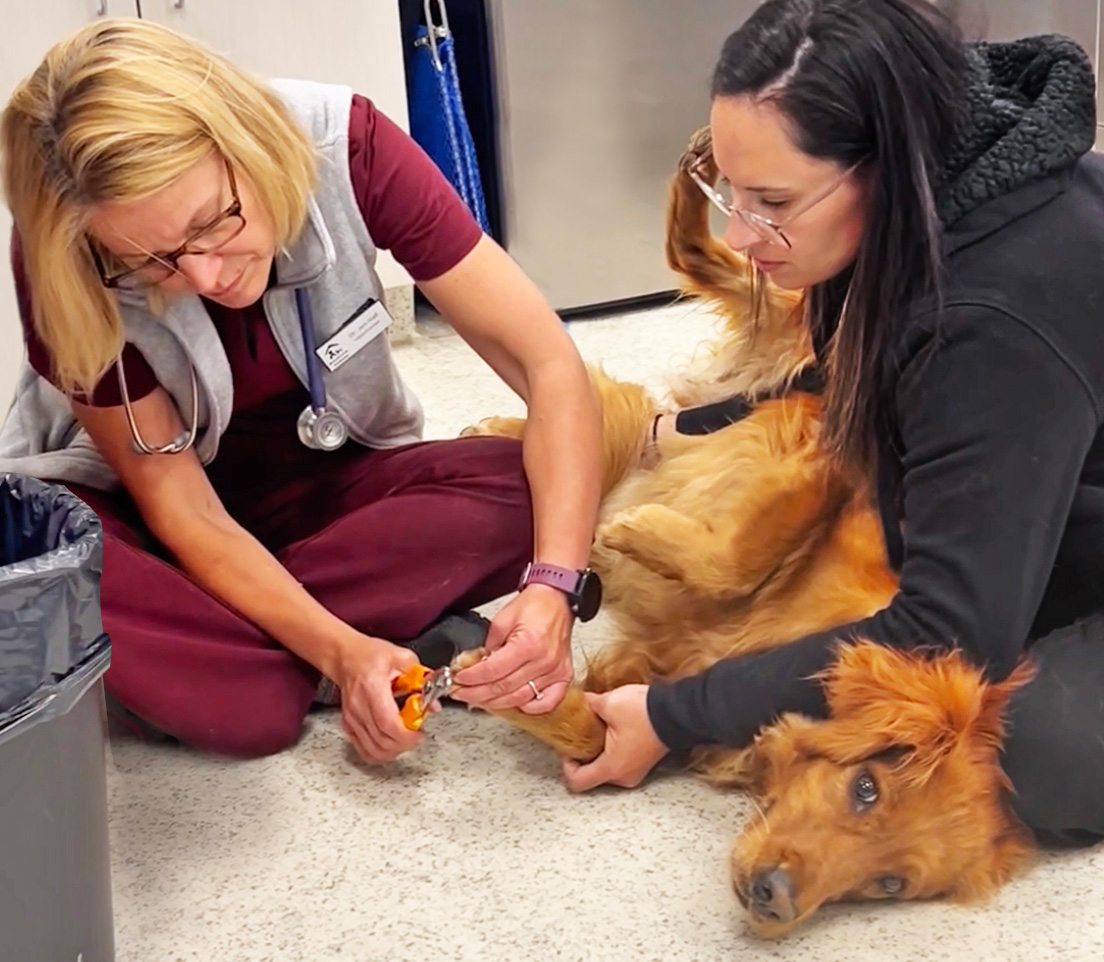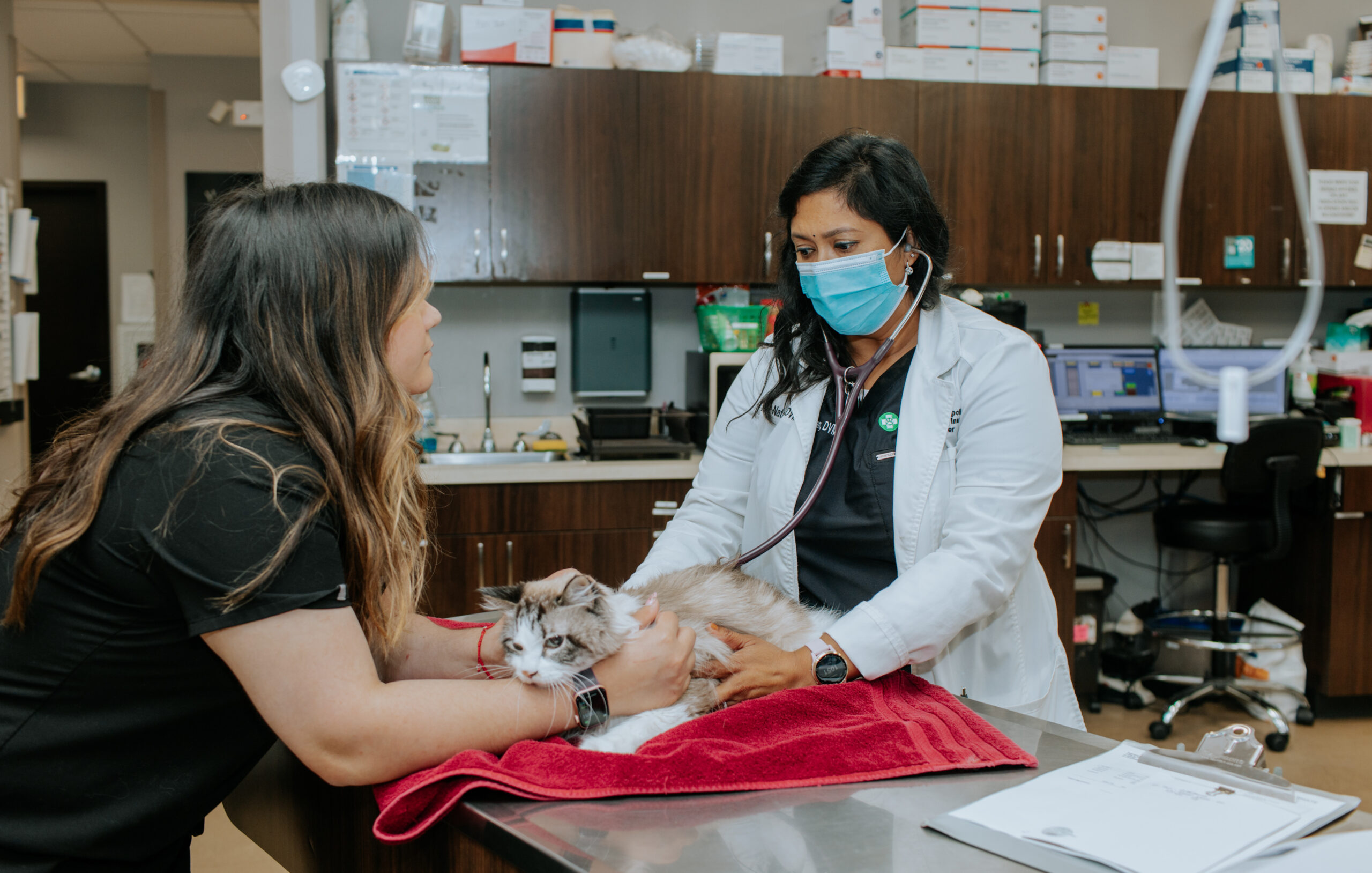Everything About Veterinarian Surgery: Recognizing the Significance of Professional Look After Your Animals
Vet surgical procedure is a crucial component of pet dog medical care. It incorporates numerous procedures, from regular elective surgical treatments to immediate treatments. Understanding the ins and outs of these surgical procedures can aid pet dog proprietors make notified decisions. The preparation, execution, and healing phases are vital for making sure the health of pets. With proper knowledge, owners can browse the intricacies of veterinary care. What elements should be considered before a pet dog goes through surgery?
Kinds Of Vet Surgeries
When a family pet requires surgical intervention, understanding the numerous kinds of vet surgeries can aid pet owners make informed choices. Veterinary surgical procedures can be extensively classified into 3 major kinds: optional, urgent, and emergency situation surgical treatments. Optional surgical procedures, such as spaying or neutering, are intended treatments that are not right away life-threatening. Urgent surgical procedures, like those for international body removal, must be done soon however are not dangerous in the minute. Emergency surgical procedures, such as those resolving extreme injury or inner bleeding, are vital and require immediate attention.Additionally, surgeries can differ in intricacy, ranging from minimally invasive laparoscopic procedures to much more comprehensive open surgeries. Each kind of surgical procedure brings its very own threats and recovery processes. Comprehending these classifications allows animal proprietors to participate in purposeful discussions with veterinarians, resulting in far better results for their cherished family pets.
Planning for Your Animal's Surgical treatment
Getting ready for a pet's surgical procedure involves an extensive checklist to assure all essentials are covered. Efficient communication with the vet is crucial for understanding the procedure and any essential pre-operative steps - tplo surgery. Additionally, having clear post-operative care instructions will aid owners supply the very best support for their recovering animals
Pre-Surgery List Essentials
Assuring a smooth surgical experience for a pet dog requires cautious preparation and focus to information. A pre-surgery checklist is crucial for pet dog owners to adhere to. Initially, verifying the scheduled surgical procedure date and time is vital. Owners should additionally confirm that their family pet has actually not eaten according to the veterinarian's directions, commonly for 8-12 hours before surgical treatment. Collecting required clinical records, consisting of inoculation history, is necessary for the vet's evaluation. It is additionally recommended to prepare a comfy space in the house for the animal's healing after surgical procedure. Owners ought to have a strategy for transportation to and from the veterinary clinic, making sure that the pet dog is safe and secure and comfy throughout the journey. Complying with these steps can substantially improve the surgical experience.
Interacting With Your Vet

Effective communication with the vet is crucial for an effective medical experience for animals. Proprietors need to be prepared to discuss their animal's medical background, including any type of pre-existing problems, drugs, and allergic reactions. This details assists the veterinarian evaluate threats and tailor the surgical strategy as necessary. In addition, pet owners must ask inquiries regarding the treatment, anesthetic, and anticipated results to ensure they fully comprehend the process. Clearing up any questions can reduce anxiousness for both the family pet and the proprietor. It is additionally important to communicate any kind of behavior adjustments or concerns observed in the family pet leading up to the surgical procedure. Inevitably, clear discussion cultivates trust and collaboration, ensuring that pet dogs obtain the finest feasible treatment during their surgical journey.
Post-Operative Care Recommendations
After discussing the operation with the vet, family pet owners need to concentrate on post-operative care directions to assist in a smooth recuperation for their family pets. These directions normally consist of checking the surgical website for signs of infection, such as inflammation or discharge. Pet dogs might require to be kept one's cool and constrained to prevent extreme motion that can interfere with healing. Discomfort monitoring is important, so owners must follow the veterinarian's advice on carrying out medications. Furthermore, nutritional constraints might be suggested to stay clear of intestinal upset. Regular follow-up visits are vital to guarantee appropriate recovery and address any worries. By sticking to these post-operative care guidelines, animal owners can substantially add to their animal's healing and general health.
The Surgical Process Explained
The surgical process for family pets encompasses important steps that guarantee their security and healing. Pre-surgery prep work are important for lessening dangers, while post-operative care guidelines play a crucial function in promoting recovery. Understanding these components helps animal owners navigate the surgical experience extra effectively.
Pre-Surgery Preparations
Prior to a pet dog goes through surgery, several vital prep work need to happen to ensure a risk-free and successful treatment. First, a thorough vet assessment is vital to examine the animal's total wellness and identify any type of potential threats. This may include blood tests, imaging, or other diagnostics. The vet will certainly additionally talk about anesthesia options tailored to the pet dog's particular needs. Additionally, pet dog proprietors are normally advised to keep food and water for a specified time prior to surgical treatment to lessen the danger of difficulties throughout anesthesia. It is necessary for owners to offer a full medical background, including any type of medicines or allergic reactions, making sure the medical team has all needed info. Correct communication and adherence to pre-surgery visit their website guidelines can substantially improve the outcome of the procedure.
Post-Operative Care Guidelines
Proper post-operative treatment is necessary for making sure an animal's recuperation complying with surgical procedure. After the procedure, animals must be monitored closely for any indications of problems, such as excessive bleeding, swelling, or unusual habits. It is very important to comply with the veterinarian's guidelines concerning medicines, consisting of painkiller and anti-biotics. Pet dogs must be maintained in a silent, comfortable setting to decrease stress and anxiety and advertise healing. Limiting task is essential; short, leashed strolls might be essential, but jumping or running need to be stayed clear of. Normal follow-up appointments should be arranged to assess the recovery process. Furthermore, the surgical website has to be kept tidy and completely dry, with any indications of infection reported to a vet immediately. Sticking to these guidelines boosts recovery results.
Anesthesia and Pain Administration
Efficient anesthetic and discomfort monitoring are vital parts of vet surgery, making sure that pets stay comfy and risk-free throughout the treatment. Veterinarians assess each pet dog's private requirements, taking into account factors such as age, weight, wellness condition, and the type of surgical procedure being performed.Anesthesia procedures generally consist of a combination of pre-anesthetic medicines, induction representatives, and inhalant anesthetics, allowing for specific control over the animal's degree of consciousness. Surveillance during surgical procedure is crucial; vets continually observe essential indications to deal with any type of possible complications promptly.Pain administration techniques may entail opioids, non-steroidal anti-inflammatory medicines (NSAIDs), and regional anesthetics, tailored to the animal's details situation. This complex strategy helps reduce discomfort and advertises a smoother surgical experience. By prioritizing efficient anesthesia and discomfort administration, veterinary professionals boost the total well-being of family pets undergoing procedures, ensuring they obtain the highest possible requirement of care.
Post-Operative Treatment and Recuperation
Adhering to surgery, the emphasis shifts to post-operative care and healing, which is vital for making sure a pet dog's secure return to typical tasks. During this duration, family pets call for a quiet, comfortable atmosphere to aid recovery. Proprietors ought to carefully monitor their family pets for any kind of indicators of pain or uncommon behavior.Veterinary standards commonly include certain guidelines associated with drug administration, injury treatment, and nutritional changes. It is crucial to stick to these suggestions to decrease complications and advertise recovery. Pet dogs may need to be limited from strenuous activities, such as running or leaping, throughout their recovery period (tplo surgery).Regular follow-up visits with the veterinarian enable monitoring of the family pet's progress and timely changes to the care plan. Supplying psychological support and companionship can also boost an animal's healing experience, assisting to ease stress and anxiety and anxiety. official source In general, diligent post-operative care plays a significant role in achieving an effective recuperation
Identifying Problems After Surgical Treatment
Just how can family pet proprietors identify complications after surgery? Understanding of specific indicators is important for making sure the health of pets during healing. Common indicators consist of excessive swelling, inflammation, or discharge at the medical website, which may signify infection. In addition, relentless discomfort, shown by whining or reluctance to move, must trigger immediate focus. Adjustments in hunger or water intake can likewise suggest problems; a reduction in these behaviors may indicate discomfort or distress.Moreover, family pet proprietors must check their family pets for any kind of unusual actions, such as sleepiness or problem breathing, as these can be indications of major concerns. Vomiting or looseness of the bowels adhering to surgery may require immediate vet analysis. Recognizing these difficulties early can considerably affect a family pet's recovery procedure, emphasizing the relevance of watchfulness and punctual interaction with a veterinarian for any type of worrying symptoms.
The Duty of Vet Professionals in Surgical Care
Veterinary experts play a vital function in ensuring the safety and security and success of surgical treatments for family pets, specifically following surgical procedure when monitoring and care are extremely important. These experts include veterinarians, veterinary specialists, and support personnel, every one of whom contribute specialized skills to the medical process.Before surgical treatment, vets carry out extensive examinations to examine the pet dog's health and wellness, making certain that any type of underlying problems are handled. Throughout the procedure, the medical team offers anesthesia, maintains sterile atmospheres, and keeps an eye on essential indicators, very important for minimizing risks.Post-operative care is just as significant; vet experts observe for problems, handle discomfort, and overview owners on recuperation practices. Their expertise allows them to acknowledge very early indicators of distress or infection, making sure timely intervention. Ultimately, the collective efforts of veterinary specialists in medical care foster a risk-free atmosphere, advertising the wellness of pet dogs throughout the surgical trip.

Often Asked Questions
Exactly how Do I Select the Right Vet Cosmetic Surgeon for My Family pet?
Choosing the ideal veterinary cosmetic surgeon includes looking into credentials, reading reviews, and evaluating the clinic's environment. It is important to show on the cosmetic surgeon's experience with specific procedures and their interaction design when choosing.
What Prevail Misconceptions Regarding Vet Surgeries?
Usual misconceptions concerning veterinarian surgeries include ideas that they are constantly high-risk, unneeded, or only for emergencies. Numerous animal proprietors ignore the benefits of preventative treatments and the ability associated with veterinary medical treatment.
Just How Much Will My Family pet's Surgery Cost?
The expense of an animal's surgery can vary substantially based upon factors such as the kind of treatment, the vet's experience, and geographic area (veterinary cardiologist near me). Normally, expenditures vary from a couple of hundred to several thousand dollars

Can My Pet Consume Prior To Surgical Treatment?
Prior to surgery, it is normally encouraged that family pets abstain from eating for a certain duration. This fasting helps in reducing the threat of difficulties throughout anesthetic. Owners need to consult their veterinarian for my explanation accurate directions customized to their family pet's requirements.
Suppose My Pet Dog Has Pre-Existing Wellness Issues?
When an animal has pre-existing health and wellness conditions, it's essential for the vet to assess these elements before surgical treatment. This examination guarantees suitable safety measures are taken, lessening dangers and maximizing the family pet's total safety and security throughout the treatment.